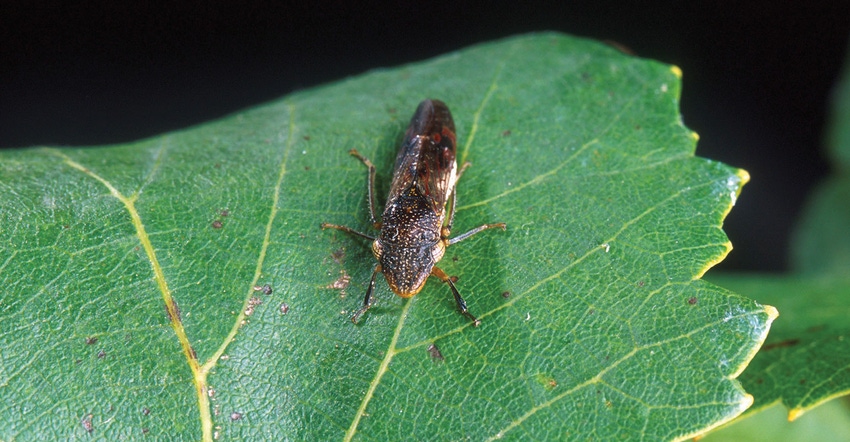
“When I started with the Glassy-winged Sharpshooter Areawide Management Program in the San Joaquin Valley over 20 years ago, scientists never thought we’d be holding the line this long. Basically, we don’t have the option to give up.”
Those thoughts from Beth Stone-Smith, California Assistant State Plant Health Director, USDA APHIS, as she girds up for yet another year of battle with GWSS.
“It’ll be in our traditional San Joaquin Valley spots in Kern, Fresno, and Madera counties where we have already implemented area-wide suppression treatments,” she said. “We won’t know about any spreading or new detections until about July 4th when insects respond to the heat, moving around and feeding on plants, and getting caught in our yellow traps. We have to wait for those trap counts to tell us what’s going on this season.”
Although the insect is large enough to be seen with the naked eye, it is relatively inconspicuous in nature since its unintentional introduction into California in the late 1980s.
“It looks very similar to Southern California’s native sharpshooter, the smoke tree variety, and it wasn’t until devastating vine loss and Pierce’s disease showed up in Temecula that folks realized this was really something different,” she said. “San Joaquin Valley with its diversity and seasonality of year-round crops was a magnet for the pest because the valley is a perfect buffet for an insect that can feed on many things.
“Other varieties of sharpshooter, like the blue-green native insect, also moves Pierce’s around the edge of vineyards, but the GWSS, because it’s larger and a stronger flyer, vectors the disease further throughout a vineyard. It feeds not just on the vine’s soft tissues, but because it has larger and tougher mouth parts, it also feeds on the bark.”
As to the level of damage it can do, “It depends on the variety of grapes and how many glassy-winged sharpshooters are in the area spreading Pierce’s. In Temecula, the vineyards that went down the quickest were Chardonnay, although we’ve had red globe table grapes in Kern County also fall victim.”
Thousands of acres rogued
In Temecula, thousands of acres were rogued as a result of GWSS transmitting Pierce’s, a response that kicked-off area-wide efforts at suppression that continue today. And with first-generation egg- hatching done and a new generation of sharpshooters anticipated in the June-July timeframe, Stone-Smith is readying for another seasonal battle.
“We’re buying time for researchers to find a definitive answer to Pierce’s disease, fighting to suppress the population of glassy-winged sharpshooters over large agricultural areas,” she told the annual Lodi Grape Day virtual audience earlier this year.
“When I started on this program over two decades ago, I never dreamed we’d still be fighting the fight in 2021. While we continue to work to slow the natural spread of GWSS, we’re also trying to slow the artificial spread via nursery plants that might carry egg masses on the underside of leaves.
“We’ve had infestations as far North as Sacramento County that were caught early and were eradicated. In San Joaquin Valley, our treatment efforts are aimed at suppression, not eradication, because there are so many hosts there.”
In a follow-up conversation with Western Farm Press, she commented: “We’re going to continue to keep trying to hold the line. We’re partnering with the grape industry to mitigate potential damage and we’ll keep trying using the chemical tools we’re currently allowed while looking for newer tools to be introduced.”
Read more about:
Glassy winged SharpshooterAbout the Author(s)
You May Also Like




